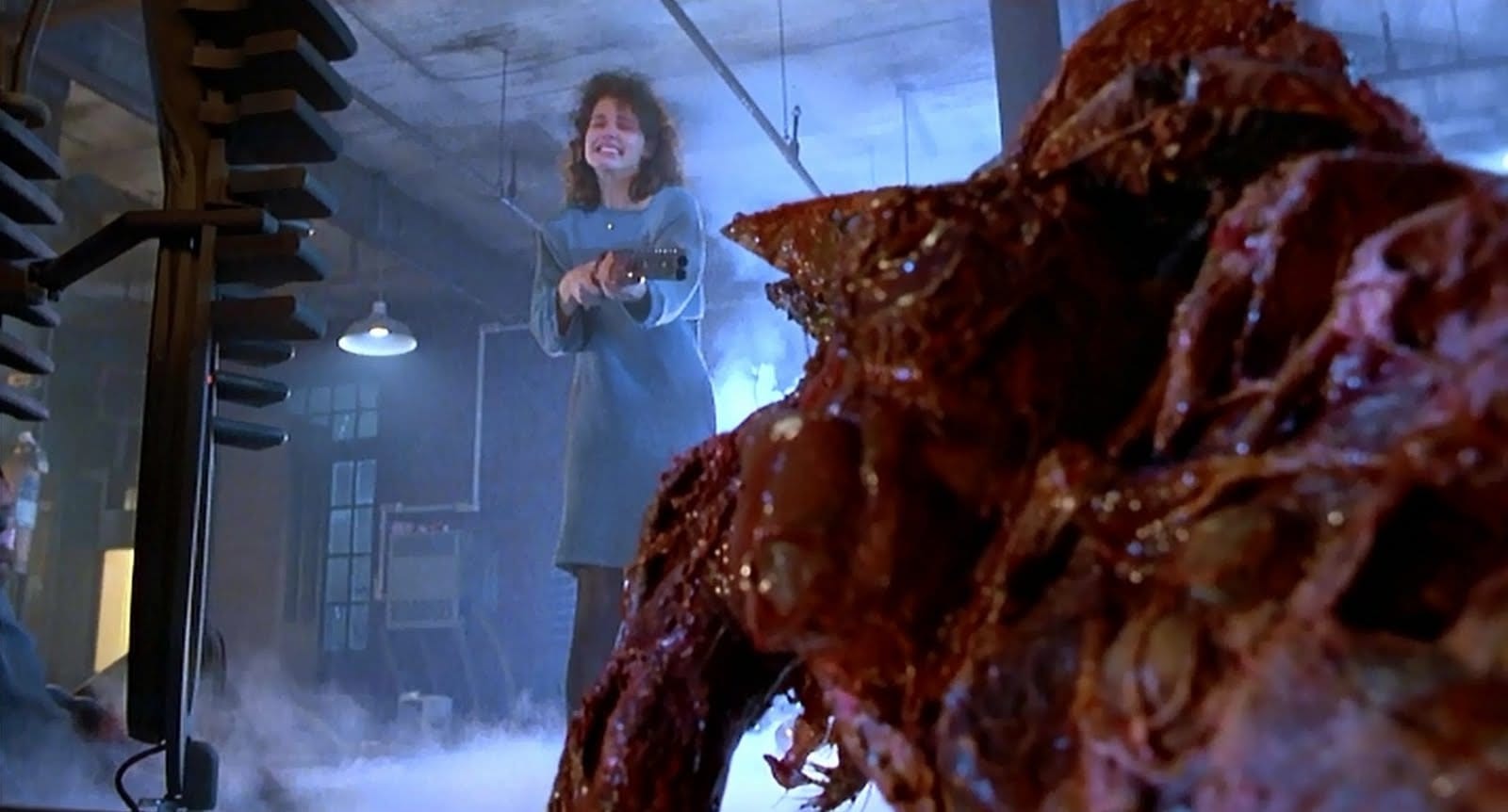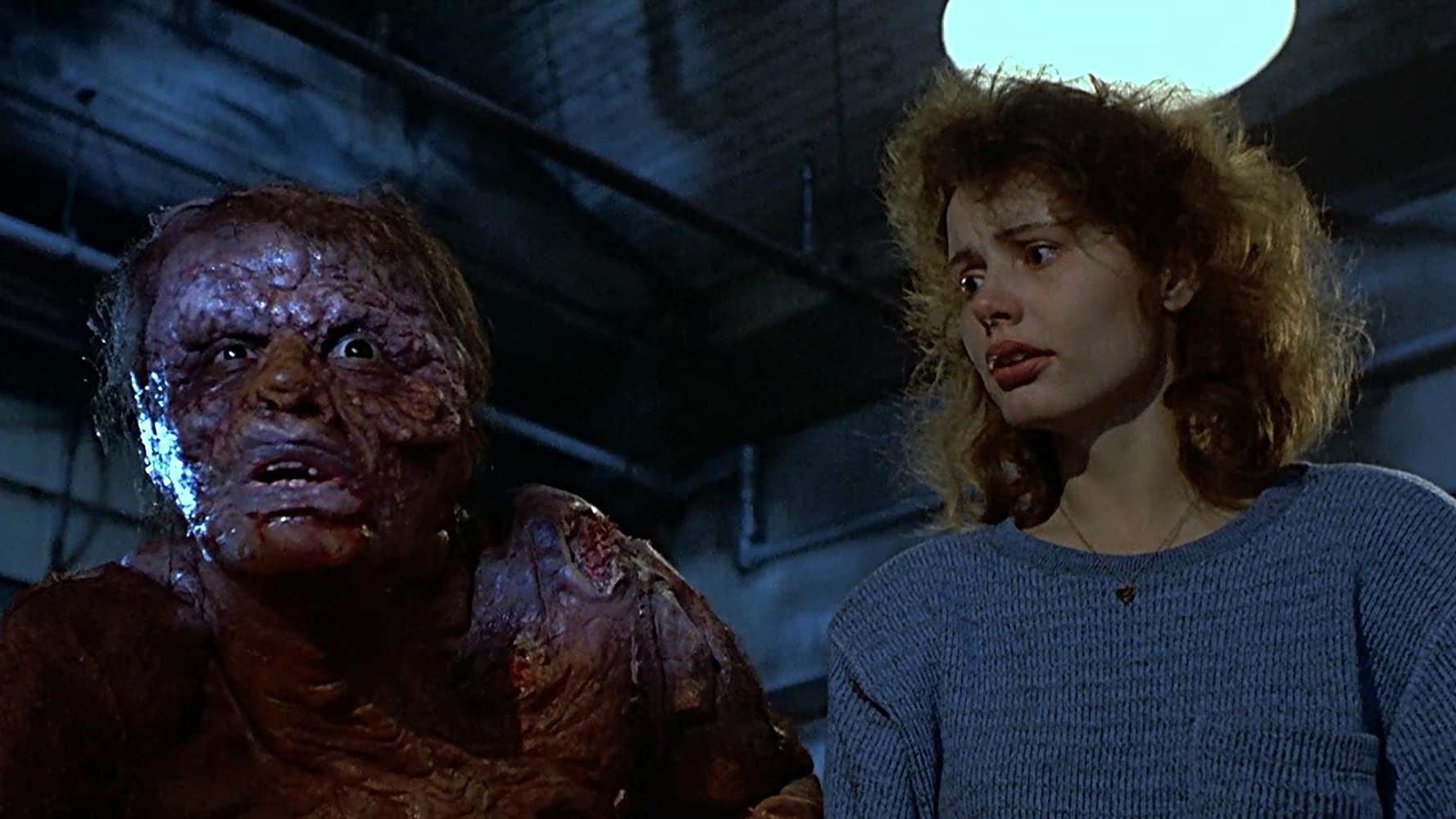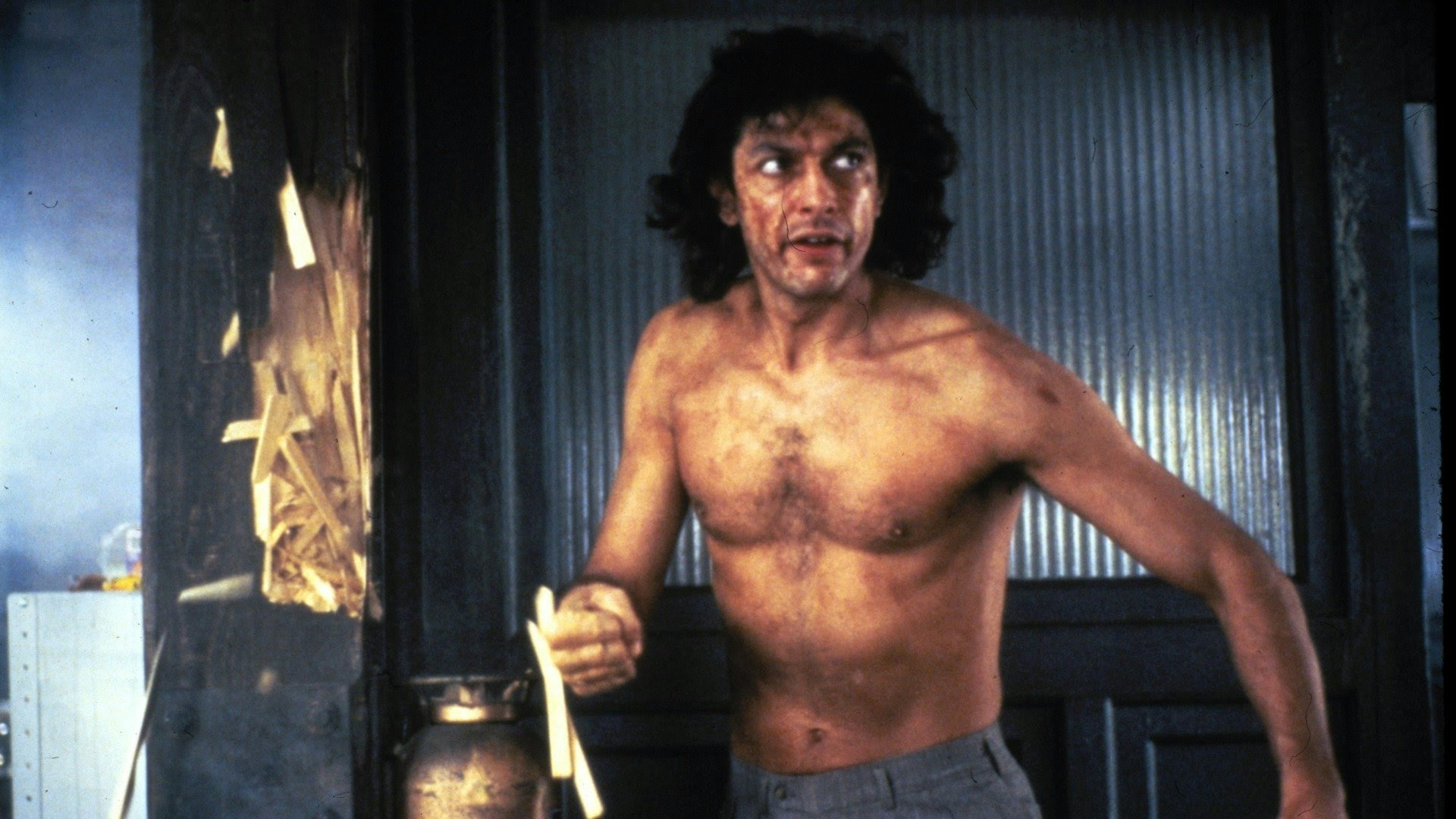
David Cronenberg has always had a distinct talent for crawling under people’s skin. After a slew of 2000s and 2010s mid-budget dramas, 2022 year saw his return to the genre that made him with Crimes of the Future, a fatalistic dystopian body horror that harkens back to the infatuation with technology and transformation of the human condition that defined his ‘80s career. In a subgenre as expansive as body horror, not every filmmaker can stand the test of time like Cronenberg, but there’s something incredibly distinct about the way he mines fear out of flesh.
His characters are always trapped in a hell of the false agency. Sometimes, the presentation can be as obvious as the zombie virus in Shivers. Other times, he can craft a twisting psychological neo-noir like with Videodrome. But there's one particular movie in which his characters' helplessness lends itself to both terror and devastating tragedy — and that's The Fly.
By the time producers in the early ‘80s had decided to remake the classic ‘50s B-movie, modern audience sensibilities had changed. Visceral practical effects were a common denominator in the horror movies of the time, but so were smaller-scale and more personal horror stories. Screenwriter Charles Edward Pogue was approached to reimagine the original, and his draft centered on a married scientist named Geoff who discovers teleportation but is incidentally bonded with a common housefly when he enters the machine. The film was far more of a traditional monster movie in Pogue’s script, with Geoff losing the ability to speak early on. However, Pogue laid some important narrative and thematic groundwork, such as the remake being more focused on Geoff's horrific transformation as well as his wife Barbara's paranoid fear that she might be pregnant with Geoff's genetically compromised baby.
Although producers Mel Brooks and Stuart Cornfeld wanted Cronenberg to direct the film from the beginning, it was an arduous process securing him, as he was attached to direct what would eventually become 1990’s Total Recall at the time. However, after that project fell through, Cronenberg agreed to step into the director’s chair on The Fly with one major concession. He was given the freedom to rewrite Pogue’s script from the ground up, though he maintains to this day that without Pogue’s foundation there would be no film). Cronenberg’s draft kept the bare bones of the film’s overarching plot (a scientist researching teleportation gets genetically bonded with a fly) while changing the characters significantly, turning Geoff and Barbara Powell into Seth Brundle (Jeff Goldblum) and Veronica Quaithe (Geena Davis), as well as emphasizing the viscerality of Brundle's horrific transformation.

While the decision to take Seth and Veronica from a married couple to a budding romance might seem asinine at first, it gives the film a timeless star-crossed romance. Undoubtedly bolstered by the fact that they were actually dating at the time, Goldblum and Davis' chemistry is unshakeable, an endearing mix of his bug-eyed eccentricity and her shrewd-yet-tender exterior. Instead of meeting them in the middle of domestic life, we actually get to see their meet-cute (something that Cronenberg does surprisingly well in his body horror films) and watch as they grow together. This makes it all the more heart-rending to see the ways in which they fall apart.
And falling apart is precisely what happens after Seth steps out of the teleporter for the first time. Most people come to The Fly to see the pinnacle of ‘80s grotesquerie and slime-coated carnage, and Cronenberg and visual effects artist Chris Walas deliver. Parodied, homage, and frequently cited as some of the most breathtaking effects work of all time, Brundle’s transformation is both disturbing and beautiful. A lot of body horror will depict sudden and rapid transformations in order to inspire repulsion or shock in their audience, and there’s plenty of that in the design of the Brundlefly creature, but the SFX team charted his transformation out over the course of seven major stages to drive home the slow debilitation of his metamorphosis. Goldblum’s prosthetics reportedly took five hours a day to apply. The end result is a stunning combination of makeup and effects that work hand in hand alongside a staggeringly committed performance to emphasize the misfortune of Seth’s ordeal.

While Cronenberg adamantly swears his movie is meant to be a parable for mortality in general, it’s hard to see Jeff Goldblum’s transformation as anything other than an allegory for the AIDS epidemic. Unlike the original film, it’s presented here more like a debilitating disease than a freak scientific accident. Similar to how the virus weakens your auto-immune system and makes you more susceptible to far more harmful infections, Brundle’s body is genetically assimilated against his will by the fly’s DNA.
Veronica’s character also intersects with the concept of bodily agency and resonates in a world where women’s reproductive rights are under siege every day. When Veronica realizes she’s pregnant with Brundlefly’s baby, she chooses to abort what could be a monster growing inside her. Even for 1986, this was a bold narrative direction, but Cronenberg’s films have always toed the line between transgressive and mainstream. Cronenberg never judges or condemns Veronica for her actions, instead choosing to sit with her as she wrestles with the despair of the only real choice that she has.
It would have been easy for Cronenberg to fall back on his obvious predilections and make a brutal and monstrous creature feature that terrified audiences using disgusting imagery, but the movie we got is so much deeper and more complex than that. Cronenberg understands that body horror isn’t just scary because it looks gross, it’s scary because deep down we all have a primal fear of losing control – over our lives, our relationships, and our bodies. From the design of Brundlefly’s special effects to the tragic ill-fated romance at the center of the story, The Fly is an aching tragedy that refuses to settle for a simple scare factor and instead frames its horror as all-consuming, slow-moving, and soul-rendingly inevitable.
The Fly is streaming now on HBO Max.







